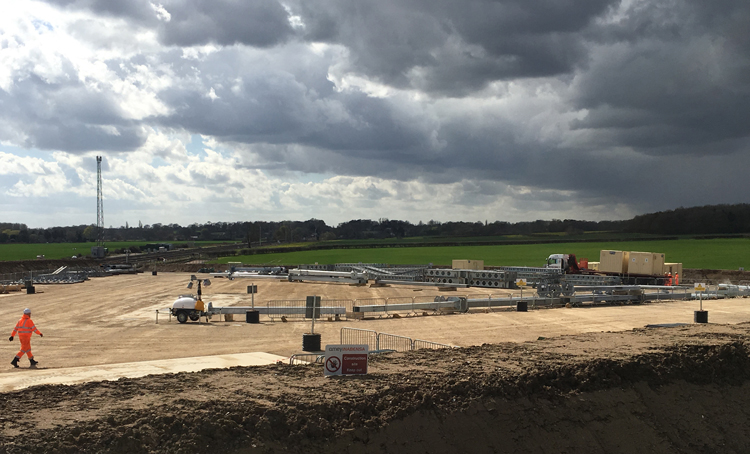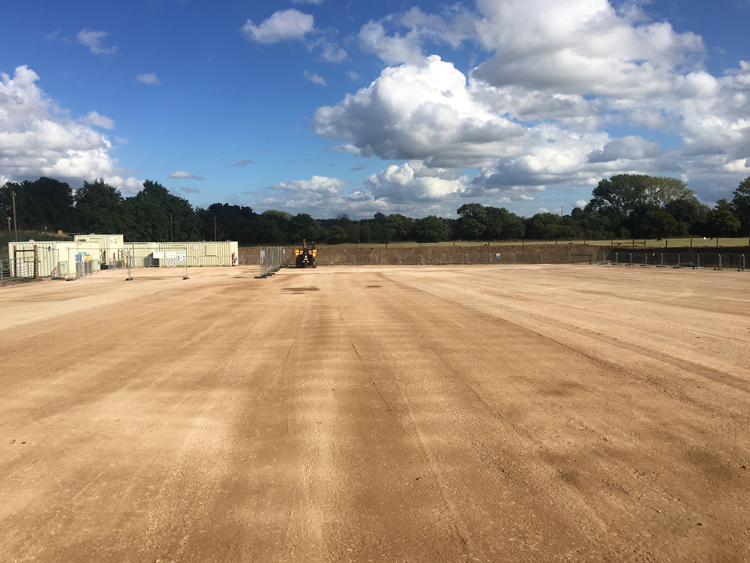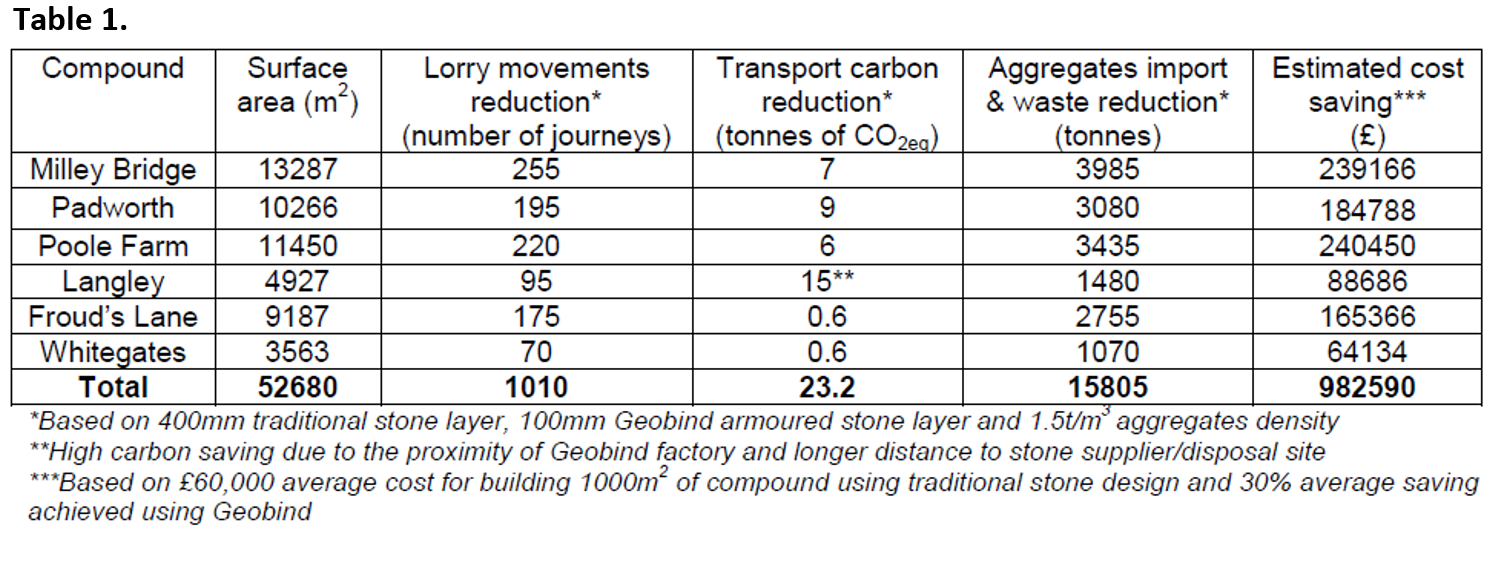Case study: Innovative Road Rail Access Points
Company: Amey Inabensa
What’s the issue being addressed?
Amey Inabensa were contracted by Network Rail to deliver the electrification works in the Thames Valley Area. This included building and operating a significant number of compounds, and associated RRAPs to provide railway access, OLE material storage capacity and welfare facilities over a three-year period.
The construction of a compound, most commonly on agricultural land leased by Network Rail, required the removal of a layer of topsoil (stored on site for reinstatement), and the import of aggregates to build a load bearing layer able to accommodate the movements of heavy machinery and the storage of heavy material and welfare cabins.
The land agreement between Network Rail and the landowner required the land to be returned to its original state meaning aggregates removed and topsoil reinstated. As a result, the imported aggregates would become waste if a solution for reuse could not be identified before the demobilisation stage.
How was this solved?
In order to overcome some of the constraints associated with land reinstatement, as well as reducing construction time and costs, Amey Inabensa approached Geotech Soil Stabilisation (GSS) to discuss an alternative solution using a binder with similar properties to cement: Geobind. The product is mixed with the soil, transforming the site into a load bearing surface. During reinstatement, the surface is broken up and sodium bicarbonate added into the soil to correct the pH and return the land to its original state.


The two images above show the Geobind product in use on the Greater West Programme.
What were the outcomes?
Using this innovative approach to compounds construction at six locations on The Greater Programme, Amey Inabensa reduced the import of aggregates and their associated disposal by 50 to 75%. This also significantly reduced the number of lorry movements to and from site by 40%, minimising the safety risks and nuisance impacts of heavy deliveries to the local community. Another benefit of the Geobind solution is the reduced maintenance requirements against conventional stone designs.
Carbon emissions associated with transport of material for the construction of the compounds was also reduced, with savings ranging from 10 to 70%, mostly depending on the distance to the Geobind manufacturing location in Portskewett, Caldicot in South Wales. Finally, this solution achieved an average 30% cost reduction, for a total saving estimated to be approximately £1 million. The breakdown of environmental and financial benefits can be seen in table 1.

Principles
Reducing our environmental impact, Carbon smart, Optimising the railway
Asset/ operations
Asset
Organisation type
Contractor/Network Rail

